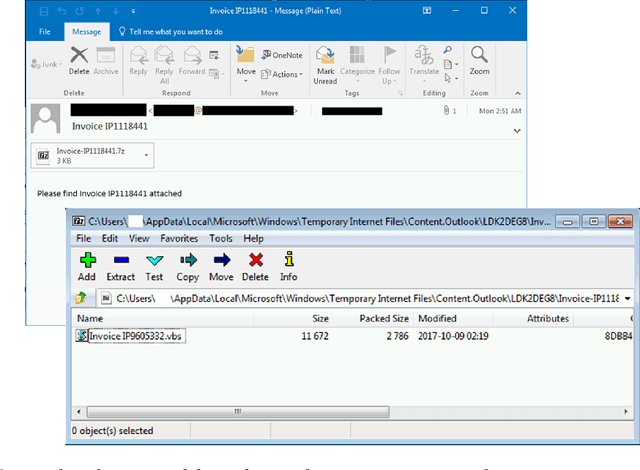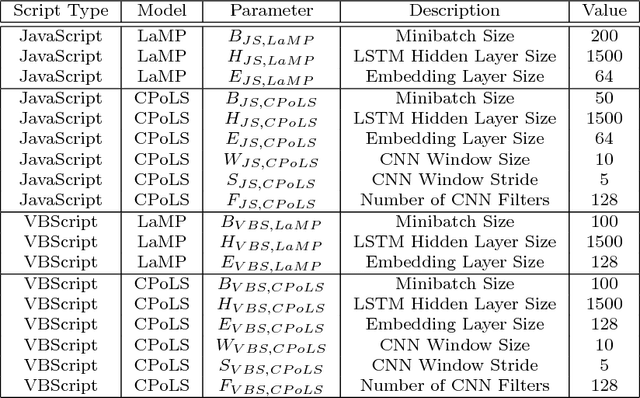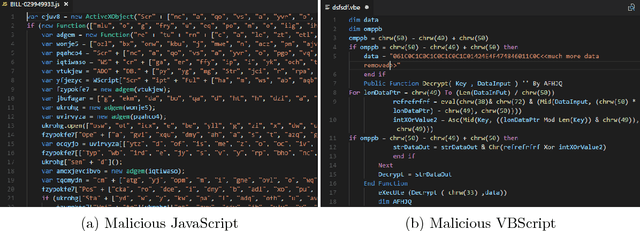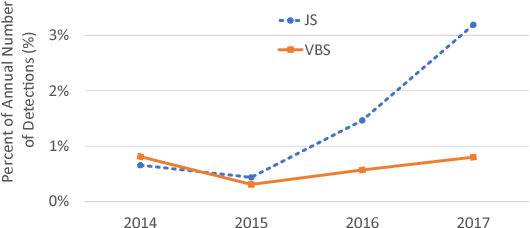Neural Classification of Malicious Scripts: A study with JavaScript and VBScript
Paper and Code
May 15, 2018



Malicious scripts are an important computer infection threat vector. Our analysis reveals that the two most prevalent types of malicious scripts include JavaScript and VBScript. The percentage of detected JavaScript attacks are on the rise. To address these threats, we investigate two deep recurrent models, LaMP (LSTM and Max Pooling) and CPoLS (Convoluted Partitioning of Long Sequences), which process JavaScript and VBScript as byte sequences. Lower layers capture the sequential nature of these byte sequences while higher layers classify the resulting embedding as malicious or benign. Unlike previously proposed solutions, our models are trained in an end-to-end fashion allowing discriminative training even for the sequential processing layers. Evaluating these models on a large corpus of 296,274 JavaScript files indicates that the best performing LaMP model has a 65.9% true positive rate (TPR) at a false positive rate (FPR) of 1.0%. Similarly, the best CPoLS model has a TPR of 45.3% at an FPR of 1.0%. LaMP and CPoLS yield a TPR of 69.3% and 67.9%, respectively, at an FPR of 1.0% on a collection of 240,504 VBScript files.
 Add to Chrome
Add to Chrome Add to Firefox
Add to Firefox Add to Edge
Add to Edge